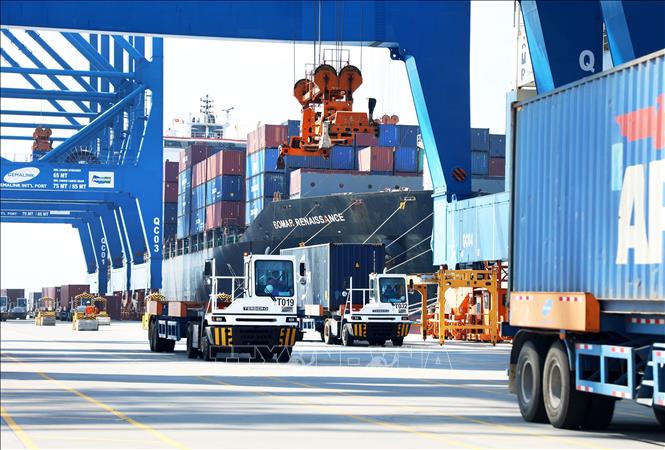
With the US announcing a basic import tax of 10% and a corresponding tax of up to 46% on Vietnamese goods, a series of industries such as furniture, textiles, footwear, electronics, seafood, etc. are facing severe impacts. In addition, there are also many Vietnamese products that are not subject to the US's corresponding tax, so businesses and industries need to study in detail and have appropriate solutions.
According to Mr. Dang Minh Hieu, Director of DMH Freight Forwarding Joint Stock Company, the US's increase in import taxes on goods has significantly impacted Vietnamese businesses exporting to this market, both positively and negatively.
Explaining this issue, Mr. Dang Minh Hieu analyzed that the negative side will reduce price competitiveness when import tax increases, making the selling price of Vietnamese products in the US higher, making the products less attractive compared to domestic products in the US or products from countries with tax incentives (such as Mexico, Canada, etc.). Businesses may lose market share if they do not adjust their business strategies.
Because high tax rates also narrow profit margins, if businesses bear the tax increase themselves instead of passing it on to customers, profits will decrease, especially in industries with low profit margins such as textiles and footwear.
In addition, businesses also face risks with high-tax items such as steel, aluminum, electronics, and wooden furniture. If Vietnam exports a lot of these items, businesses will be under great pressure.
However, besides the negative aspects due to the high tariffs imposed by the United States, there are also positive aspects for Vietnamese enterprises if they know how to take advantage of incentives from the Trade Agreement, promote upgrading value chains, especially the opportunity to replace Chinese goods exported to the United States.
Specifically, if the US increases tariffs on Chinese goods, Vietnamese businesses can benefit by shifting orders such as in the electronics and woodworking industries. Exports to the US can still increase despite high tariffs. Because high tariffs also put pressure on businesses to change and improve quality, switching to higher-value products (such as from textile processing to fashion design) to offset costs. Finally, take advantage of incentives from trade agreements: If businesses meet the rules of origin from EVFTA (Vietnam - EU Agreement) or CPTPP (Comprehensive and Progressive Agreement for Trans-Pacific Partnership), they can reduce dependence on the US market and diversify markets.
To cope with the high tariffs imposed by the United States, Mr. Dang Minh Hieu said that Vietnamese enterprises need to diversify their markets, such as reducing dependence on the United States by increasing exports to the EU, Japan, and South Korea - markets with preferential tariffs from FTAs. Optimize costs by applying technology and automation to reduce prices, or find cheaper sources of raw materials in the FTA bloc such as textile and garment materials from ASEAN. Enterprises need to take advantage of the "Made in Vietnam" mechanism to avoid being subject to trade defense tariffs by proving that the goods have a clear origin, are not re-exported Chinese goods, and at the same time, lobbying industry associations (such as VITAS, VASEP) to negotiate for the US to reduce tariffs or exclude certain items.
Sharing this view, Mr. Le Tien Truong, Chairman of the Board of Directors of Vietnam Textile and Garment Group, said that at this time, Vietnamese enterprises need to be calm and proactive in preparing solutions to respond to the policy of imposing taxes on export goods of Vietnam's textile and garment industry, and increase purchases of products that can be produced by the US to create a better position when negotiating tariffs between the two countries.
Mr. Le Tien Truong said that what businesses are concerned about is the difference in the tax increase between Vietnam and other competing countries, not just the absolute number of tax increases in Vietnam alone. For example, in the tax list published by the US, Vietnam must pay 46%, which means that from the current tax rate of 18% for textiles and garments, it will increase by about 28%.
On the contrary, there are countries that see lower tax rates than Vietnam, but their current starting point is that they are poor countries enjoying a GSP tax rate of 0, but in reality their tax rates are much higher than Vietnam's, even increasing by 30 - 36%. Thus, the level of impact on the shift of orders depends on the difference in tax rate increases between countries.
Here, countries with large textile industries equivalent to Vietnam are Bangladesh, India, Indonesia, Cambodia, Myanmar... The level of tax change will affect the balance of international trade flows in textiles, production locations, and ordering locations. Therefore, it is difficult to immediately conclude the level of impact of this.
There is only one point that can be assessed immediately: with the tax rate increase, there is a possibility that consumer and buyer psychology will have a certain slowdown. And there is a possibility that in the short term, total demand will decrease, then retail prices may increase, making the number of orders may be less than expected. As for the forecast of the shift in the flow of the supply chain, at this time there is not enough information to assess, Mr. Le Tien Truong shared.
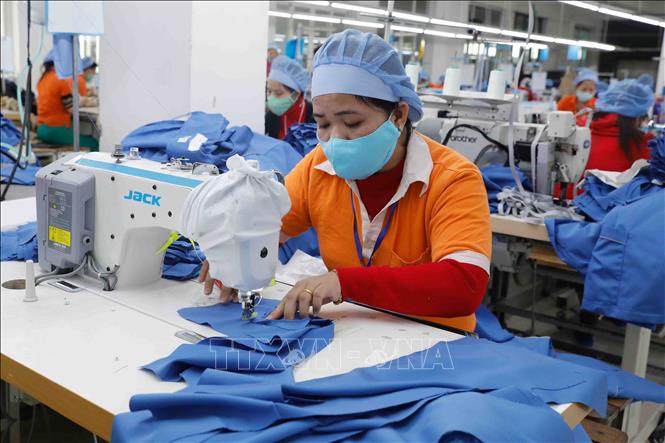
Faced with the issue of the US imposing high tariffs, Ms. Nguyen Thi Phuong Thao, CEO of May 10 Corporation - JSC, proposed that the Government support textile and garment enterprises more in terms of tax and customs policies. For May 10 Corporation - JSC, 60% of goods are exported to the US market. However, before the US import tax policy, the enterprise proactively diversified its market to reduce dependence on the US, and at the same time diversified its supply sources to reduce dependence on China. Along with that, May 10 implemented saving solutions in all activities from energy, electricity, water, increased investment in technology equipment to increase labor productivity, increase efficiency to have the most competitive prices. On the other hand, it is necessary to strengthen the development of the domestic market to balance the export and domestic balance; closely monitor the origin of raw materials and the policies of the Vietnamese Government and the US Government to have appropriate production and business strategies.
In order to support domestic export enterprises, the Government has recently made great efforts to negotiate and sign free trade agreements, supporting export enterprises with the opportunity to sign orders to many different regions. Currently, May 10 maintains exports to the EU, Japan, Australia and some major markets... and will strive to make good use of these opportunities. On the other hand, enterprises hope that the Government will take action to reduce taxes and fees to support enterprises. With high tax rates as announced by the US, it is expected that inflation will increase, prices will increase, purchasing power will decrease, and consumer demand will decrease, which will affect the rate of orders, Ms. Nguyen Thi Phuong Thao informed.
To cope with the high US tariffs, Ms. Phan Thi Thanh Xuan, Vice President and General Secretary of the Vietnam Leather, Footwear and Handbag Association, said that there should be better incentive policies to help businesses save production costs.
With the US imposing a tax of up to 46% on imported goods from Vietnam, the footwear industry is facing an extremely big challenge in the coming period. The footwear industry accounts for 40% of total export turnover to the US market, with a value of more than 10 billion USD, so the high tax rate will certainly cause the export situation to stagnate. However, we should not be too alarmed, because in fact, looking at the overall supply chain, footwear is an item that is no longer produced in the United States. Moreover, Vietnam is also a fairly reliable source of supply and is deeply embedded in the supply chain of the US market. With high costs, businesses will certainly have to have solutions to continue to maintain production, as well as further optimize the production process, helping to balance the increased tax costs in the near future.
To cope, in the immediate future, not only the US market, Vietnam has up to 16 free trade agreements with other countries; of which, two very large agreements are EVFTA and CPTPP, as well as the UK market. Therefore, continuing to diversify export markets as well as taking advantage of the advantages of markets with free trade agreements is still a priority for businesses.
Besides, the above challenge is probably also an opportunity for businesses to restructure the production process, increase labor efficiency, and reduce input costs.
Through this, Ms. Thanh Xuan also recommended that ministries and branches need to have better policies, especially preferential policies, reform of administrative procedures, taxes, customs, helping businesses to get tax refunds faster, customs procedures are more open, creating favorable conditions for businesses to save costs in the production process. With the upcoming negotiations, it is possible to think of solutions such as importing raw materials available in the US market, such as leather products that are strong, or high technologies from the US for the leather and footwear industry. This is a solution to help the leather and footwear - handbag industry rebalance the trade balance, Ms. Phan Thi Thanh Xuan emphasized.
On the other hand, the impact of high taxes also leads to difficulties for export enterprises. Workers are at risk of having their working hours cut, their income reduced, and their ability to save money to buy a house, including social housing, is also more difficult.
Source: https://doanhnghiepvn.vn/doanh-nhan/hoa-ky-ap-muc-thue-cao-co-hoi-va-thach-thuc-voi-doanh-nghiep-xuat-khau-viet-nam/20250405012737044


![[Photo] President Luong Cuong awarded the title "Heroic City" to Hai Phong city](https://vphoto.vietnam.vn/thumb/1200x675/vietnam/resource/IMAGE/2025/5/13/d1921aa358994c0f97435a490b3d5065)


![[Photo] President Luong Cuong attends the inauguration of the international container port in Hai Phong](https://vphoto.vietnam.vn/thumb/1200x675/vietnam/resource/IMAGE/2025/5/13/9544c01a03e241fdadb6f9708e1c0b65)
![[Photo] Prime Minister Pham Minh Chinh receives Ambassador of the French Republic to Vietnam Olivier Brochet](https://vphoto.vietnam.vn/thumb/1200x675/vietnam/resource/IMAGE/2025/5/13/f5441496fa4a456abf47c8c747d2fe92)
![[Photo] Many people in Hanoi welcome Buddha's relics to Quan Su Pagoda](https://vphoto.vietnam.vn/thumb/1200x675/vietnam/resource/IMAGE/2025/5/13/3e93a7303e1d4d98b6a65e64be57e870)



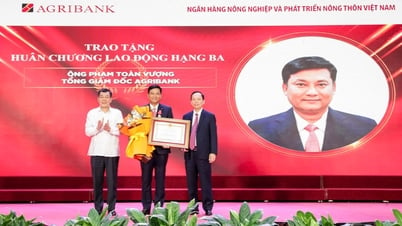
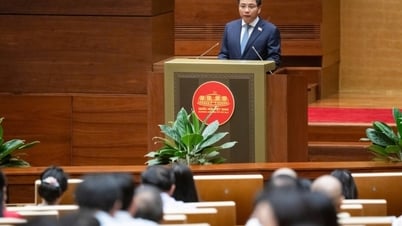







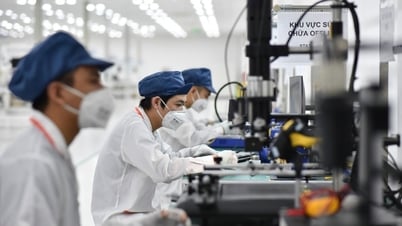
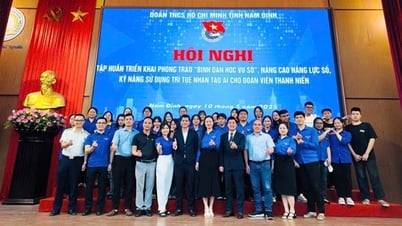



















































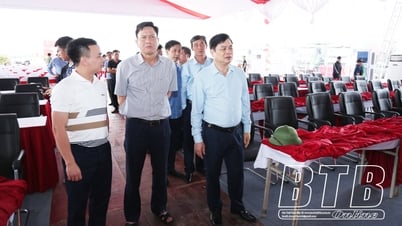


















Comment (0)